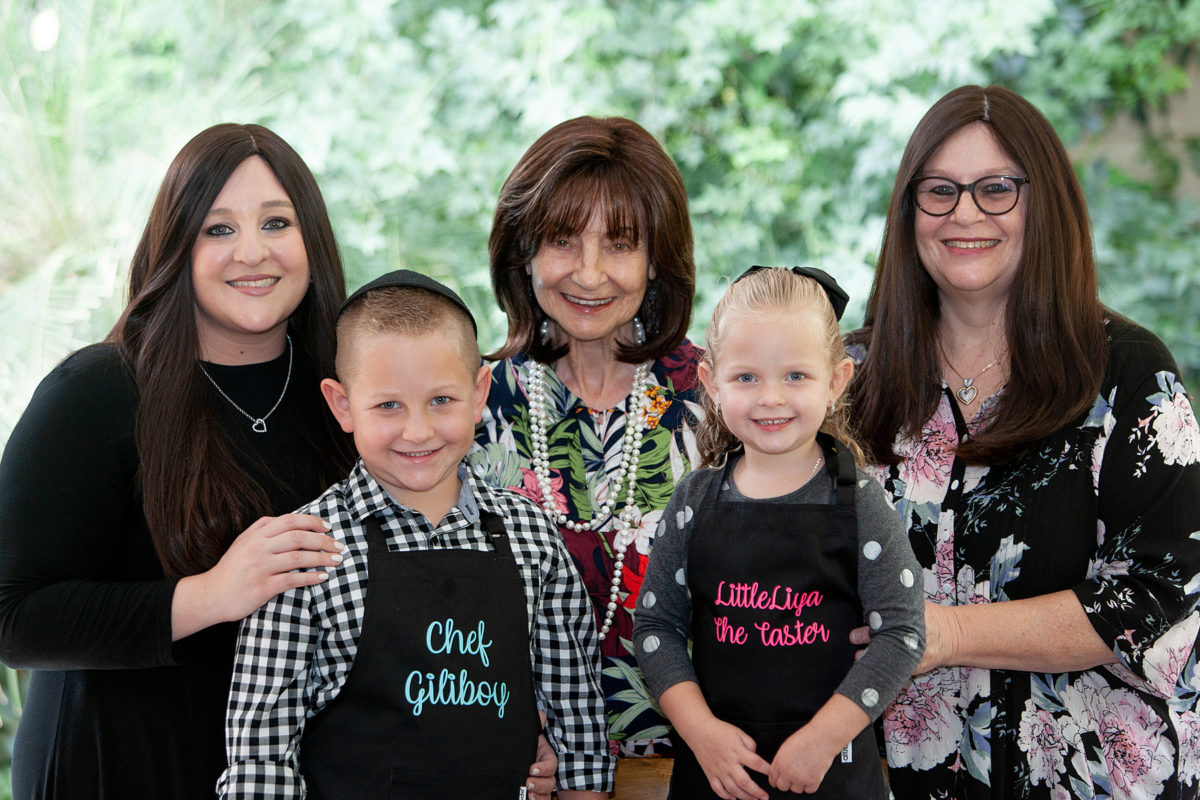
Religion

The kinship of kneidlach
Don’t you dare open the pot while they are boiling; use a kochleffel (traditional cooking spoon) and a bit of this and a bit of that; talk softly, and take off your shoes; play music while cooking.
There might be divergent opinions on the best method to use when making the perfect kneidlach, but one ingredient is always the same: the love with which this tradition is passed from generation to generation.
The first time Mish Berkowitz, now aged 81, made kneidlach was in 1961. She was newlywed, and got the recipe from a fellow teacher at King David school.
“[My colleague] promised to teach me to make the best kneidlach in the world, so she gave me the recipe, and I went home and tried it.”
What was her husband’s opinion of her first attempt? “Oh, he said he loved them! But we had been married for only three months,” she says with a smile.
Indeed, they must have been truly delicious, for they have been passed down four generations.
Berkowitz’s daughter, Pam Tauby, relishes this sense of continuity, recalling how as a little girl, she shared the privileged duty with her sister of being designated as the pot lifter for this prestigious preparation.
In her own married life, Tauby continued the kneidel tradition, albeit in slightly different circumstances.
“We swapped to the Chabad tradition of having matzah balls only on the last day of Pesach,” she says. This is a Chassidic “stringency, rather than a rule” that is related to the modern matzah manufacturing process.
The Chassidic practice is to ensure that the matzah doesn’t get wet in order to mitigate against pockets of flour within the matzah possibly turning it into chametz (foods not permitted on Pesach).
As such, their tradition is to make kneidlach on the eighth night, when the Torah mitzvah of keeping the seven days of the festival have been fulfilled. They also make a point of eating it during this last part of Pesach rather than afterwards to show unity with other Jewish people who do eat it for the whole chag. “It’s to show that we don’t think we are holier than you; we just have a different convention.”
Tauby, herself the mother of four daughters, says it took her sons-in-law, who didn’t come from a Chabad background, some adjustment to get used to this waiting period.
However, Brendan Moore, who is married to her daughter, Kayla, says it has actually brought a special dimension to the chag. “While it was strange when I first experienced it, actually now the build-up to the last day is like a beautiful send-off to Pesach,” he says.
Kayla says she started making the recipe only a few years ago, nervous to live up to the gravitas of its reputation. “It was this big moment! Here was something that has been passed down, and now I had better make it properly. The first time was perfect. I was so proud of myself, I even have a video of serving it!”
Now, the family revel in the newest generation’s engagement with the chag. “I love seeing Pesach through my children’s eyes. We see it in a whole new light,” says Kayla.
Indeed most recently, “Bobbie Mish” taught her recipe to two of her 14 great-grandchildren, Gilad, aged five, and Liya, three. The pair have self-styled themselves as “gourmet chefs” complete with personalised aprons and a homemade cooking vlog!
The final verdict after their latest episode featuring Bobbie and her kneidlach? A definitive “yummy” from Gili, and a big thumbs up from Liya.
When it comes to the great big customary cook-off of Pesach, Mary Kropman, 83, also revels in the involvement of younger generations, which in her case consists of 13 grandchildren and more than 30 great-grandchildren.
Following the tradition of her own mother, who arrived in South Africa as a young woman from Belarus, Kropman doesn’t just make her own kneidlach, but also homemade chrein (horseradish), ptcha (jellied meat), even wine.
“I love it when my grandchildren and now great-grandchildren come and help me. About six weeks ago, they helped me to make the wine and the great-grandchildren were laughing all the way through. It was great! We were four generations making it together.”
Her granddaughter, Rochie Isaacson, has warm memories of her time with Kropman. It’s an experience now passed down to her own children, who flourish under Kropman’s mentorship.
“Days before Pesach, I would go to bobba and wash hundreds of eggs to ‘clean’ them for Pesach,” reminisces Isaacson. “Thereafter, I would help bobba make about 200 kneidlach for the whole family. Bobba cooks with love and simcha. She blares Jewish music and dances around the kitchen preparing food for all of us to share and love.”
Monty Fleisher’s late mother, Mattie Halpern, certainly should be lauded for the most meticulous of methodologies in her culinary kneidel pursuits.
Fleisher’s daughter, Debbie, recalls how her father used to tell stories about his childhood memories of this Pesach preparation. “When my bobba used to make kneidlach, the whole house had to be quiet because [according to Mattie] any loud or sudden noise would cause the kneidlach to flop. So they all had to take off their shoes and tiptoe around the house. They also had to open and close doors very quietly.”
The ironic outcome of this military matzah-meal drill: the kneidlach turned out “flat”, confesses her son.
Meanwhile, for the late Sonia “Shoshki” Saven, making kneidlach was a craft for which she had her own magic implements: an imposing black pot and two gleaming kochleffels brought all the way from the Mir shtetl in what was then Belarus.
Today, etched with the wear and care of more than half a century of kneidlach cookery, these items retain pride of place in the households of the generations that follow.
Indeed, her granddaughter, Jessica Goodman, recites the exact instructions Shoshki would give about their use: “The bigger the pot, the bigger the kneidlach” and “never measure with a table spoon, only an authentic kochleffel will do.”
Even as a teenager, Goodman would ask her grandmother to show her the recipe. It was an elaborate internship, for “there were never any precise measurements. It was always ‘use this size spoon, use a little bit of this, a little bit of that; feel the right texture’. It wasn’t just ‘follow the recipe and hope for the best’. It was a very tactile experience.”
The result was always so delicious that after the seder, “I used to eat her kneidlach for breakfast because they were so good,” laughs Goodman.
Another highlight of Shoshki’s culinary creations is one that resonates with the Chabad tradition. On the last day of Pesach, she would make “milk kneidlach”, a tradition the family still follows. “We make them in butter and in a milk broth. It’s actually really delicious,” Goodman declares, adding a caveat that perhaps it’s “only something an Ashkenazi Jew could love!”
Ultimately, no matter the variation, the kneidel has its own symbolic power in celebrating a legacy.
As Goodman suggests, “If you had to make a Jewish grandmother’s love tangible; if you had to associate it with an object, it would be a kneidel ball. It’s so hamish and traditional.”
SIDE BAR RECIPE
Bobbie Mish’s flop-proof kneidlach recipe
1 egg
1 Tbsp schmaltz
Pinch salt
Matzah meal
Beat egg, schmaltz, and salt together. Add enough matzah meal so that you can just roll into balls. The mixture must be quite sticky. (You can place the mixture into the fridge and roll the kneidel balls when the mixture is cold and slightly hardened.)
Cook in salted boiling water for 20 minutes.
Each batch makes six kneidlach.
Secret tips from Bobbie Mish
• “The water has to be boiling from before you even think of starting to make them.”
• “Place the kneidlach in the pot one at a time, closing the lid in between.”
• “Don’t touch that pot again for 20 minutes; don’t you dare!”
• “Don’t put too many kneidlach in the pot; you need to give them room to swell.”










